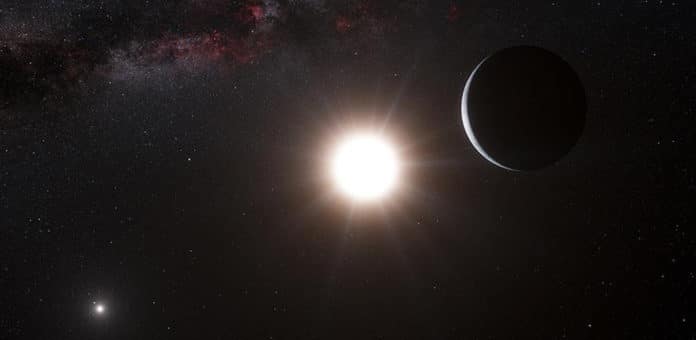Planets formation is believed to takes place in the protoplanetary disc. The most commonly accepted mechanism for how planets form is the core accretion. Core accretion occurs from the collision and coagulation of solid particles into gradually larger bodies until a massive enough planetary embryo is formed.
However, this theory is valid for planetary systems formed around a single star, but planet formation in binary stars is more complicated.
Many exoplanets have been observed in binary systems. Now, the question is how they arrived here. Several astronomers have even proposed that maybe these planets were skimming in interstellar space and got sucked in by the gravity of a binary, for example.
To solve the mystery of how planets form in a binary system, scientists from the University of Cambridge and the Max Planck Institute for Extraterrestrial Physics have developed the most realistic model to date planet formation in binary star systems. Their model has shown that exoplanets in binary star systems came into being without being destroyed in their chaotic birth environment.
The model uses realistic physical inputs and accounts for processes that are often overlooked, such as the gravitational effect of the gas disc on the motion of planetesimals within it.
Scientists studied a type of binary system – our nearest neighbor, Alpha Centauri. The model shows that Alpha Centauri provided that the planetesimals start at least 10 kilometers across in size and that the protoplanetary disc itself is close to circular, without significant irregularities.
Dr. Roman Rafikov from Cambridge’s Department of Applied Mathematics and Theoretical Physics said, “The disc is known to directly affect planetesimals through gas drag, acting as a kind of wind. A few years ago, we realized that in addition to the gas drag, the gravity of the disc itself dramatically alters the dynamics of the planetesimals, in some cases allowing planets to form even despite the gravitational perturbations due to the stellar companion.”
“The model we’ve built pulls together this work, as well as other previous work, to test the planet formation theories.”
Journal Reference:
- Kedron Silsbee and Roman R. Rafikov. ‘Planet Formation in Stellar Binaries: Global Simulations of Planetesimal Growth.’ Astronomy and Astrophysics (2021). DOI: 10.1051/0004-6361/20214113
